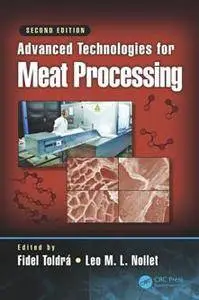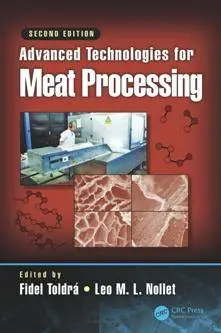Advanced Technologies for Meat Processing, Second Edition
by Fidel Toldra and Leo M. L. Nollet
English | 2018 | ISBN: 1498754597 | 722 Pages | PDF | 9.6 MB
by Fidel Toldra and Leo M. L. Nollet
English | 2018 | ISBN: 1498754597 | 722 Pages | PDF | 9.6 MB
As with the first edition, the main goal of Advanced Technologies for Meat Processing is to provide the reader with recent developments in new advanced technologies for the full meat- processing chain. This book is written by distinguished international contributors with recognized expertise and excellent reputations, and brings together all the advances in a wide and varied number of technologies that are applied in different stages of meat processing. This second edition contains 21 chapters, combining updated and revised versions of several chapters with entirely new chapters that deal with new online monitoring techniques like hyperspectral imaging and Raman spectroscopy, the use of nanotechnology for sensor devices or new packaging materials and the application of omics technologies like nutrigenomics and proteomics for meat quality and nutrition.
The book starts with the control and traceability of genetically modified farm animals, followed by four chapters reporting the use of online non-destructive monitoring techniques like hyperspectral imaging and Raman spectroscopy, real-time PCR for pathogens detection, and nanotechnology-based sensors. Then, five chapters describe different advanced technologies for meat decontamination, such as irradiation, hydrostatic and hydrodynamic pressure processing, other non-thermal technologies, and the reduction in contaminants generation. Nutrigenomics in animal nutrition and production is the object of a chapter that is followed by five chapters dealing with nutritional-related issues like bioactive peptides, functional meats, fat and salt reduction, processing of nitrite-free products, and the use of proteomics for the improved processing of dry-cured meats. The last four chapters are reporting the latest developments in bacteriocins against meat-borne pathogens, the functionality of bacterial starters, modified atmosphere packaging and the use of new nanotechnology-based materials for intelligent and edible packaging.



